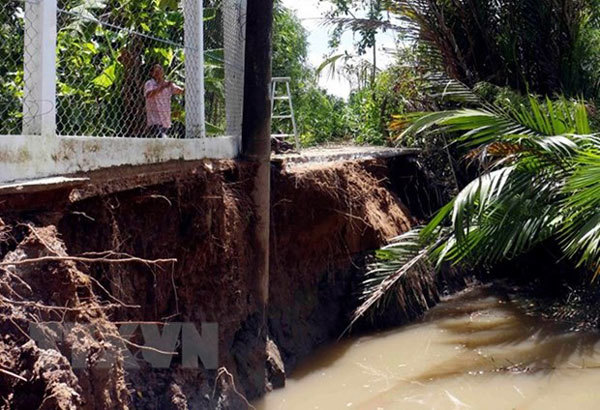 |
| Erosion in Can Tho City in June. — VNA/VNS Photo |
The ministry will also install and operate an appropriate network of land-subsidence monitoring networks in the area at the same time.
The move came following proposals by the Vietnam Institute of Geoscience and Mineral Resources.
Tran Tan Van, head of the institute, said recent data showed that the Mekong Delta had suffered from land subsidence and the situation will become worse in the future while there was not a complete monitoring system installed in the area.
Van said the inspection and installation would be implemented under two separate projects.
After the projects are finished, the Mekong Delta would have a monitoring system appropriate to its geological characteristics, he said.
This would help policy makers gain a realistic, clear and reliable information of natural geographic characteristics, climate, ecosystem, current situation and future trends of the Mekong Delta.
The projects also focused on collecting and processing geological data, building a soil structure map, taking a survey of coastal and riverbank erosion as well as inspecting exploitation of underground water and sand in the Mekong Delta, he said.
Deputy Minister Tran Quy Kien said that the proposal by the institute was timely and suitable.
He ordered the institute to work with relevant agencies such as the Ministry of Science and Technology and local administrations of Mekong Delta provinces to implement the projects soon.
The Mekong Delta region consists of 12 provinces of Long An, Tien Giang, Ben Tre, Vinh Long, Tra Vinh, Soc Trang, Dong Thap, An Giang, Hau Giang, Kien Giang, Bac Lieu and Ca Mau, and Can Tho City. VNS
 The Ministry of Natural Resources and Environment plans to make a full inspection of subsidence in the Mekong Delta provinces between 2020 and 2025.
The Ministry of Natural Resources and Environment plans to make a full inspection of subsidence in the Mekong Delta provinces between 2020 and 2025.